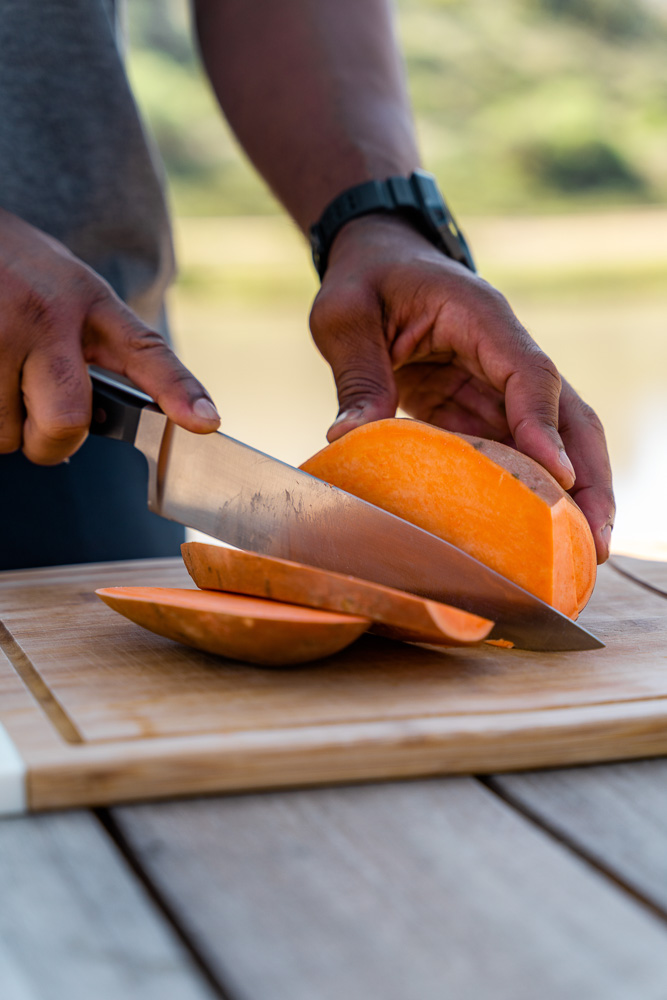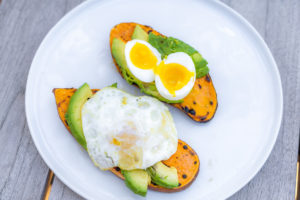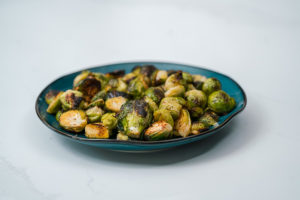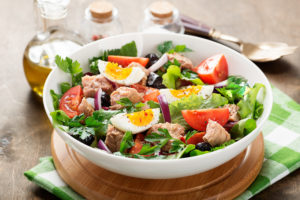THE WHOLE 30 DIET
Introduction
Don’t we all wish we could simply do five easy things consistently and have our fitness and wellness dreams come true? I’m sorry, but for most of us, that simply isn’t reality. Additionally, it gets harder to lose and keep off weight as we age. So, what are you waiting for? No matter where you are at in your health and wellness – if you have gained the quarantine-15 (or more!) or if you have a life-long struggle with your weight, we are going to embark on a journey that I pray will bring you encouragement, self-control, and passion for making changes to your habits that will lead you to your goals. It does not matter if you have started and stopped a thousand times, begin again today and you will not regret it. It also doesn’t matter how old you are, set manageable goals and faithfully apply principles you learn here, and you will feel better and see progress toward your goals.
To get to the point where a low-sugar, whole-foods, calorie-appropriate diet is your habit and lifestyle, you will need motivation, and you will need commitment. You’ve all heard the adage that it takes 21 days to form a new habit. I don’t think anyone can say for sure, but it’s probably going be a lot longer than that. I would suggest a minimum of 30 days from what I’ve observed. But even then, it may be a habit that is easily undone. Neurologists have noted, “Once a habit has been established, it remains largely autonomous until the conditioned significance of incentive motivational stimuli has been extinguished or devalued through experience.”


One diet plan that centers around a 30 day commitment (that can lead to a habit), is called Whole30. The book that sparked this diet trend is The Whole30: The 30-Day Guide to Total Health and Food Freedom, by Melissa Hartwig Urban and Dallas Hartwig. The book says about itself on the homepage (whole30.com), “Your only job during the Whole30 is to focus on making good food choices. You don’t need to weigh or measure, count calories, restrict calories, or purchase everything organic or grass-fed. Your only job is to stick to the Whole30 rules for 30 straight days… no cheats, no slips, no “special occasions.”
This isn’t a hazing or a boot camp; the requirement for 100% compliance is grounded in science. We call the Whole30 a “reset,” but at its heart, the Whole30 is an elimination diet. Elimination protocols have been around since the 1920’s, and many doctors say they are still the gold standard in identifying food sensitivities—but only if you do them by the books. In order to accurately test how your body responds in the absence of these potentially problematic foods, you have to completely eliminate them. One bite of pizza, one spoonful of ice cream, one sip of beer within the 30-day period and you’ve broken the “reset”—and have to start over again on Day 1.”
Roughly, we can summarize, the first 30 days are an elimination phase, and after that you transition into a reintroduction phase. Both phases are essential. In the elimination phase you eliminate all processed foods as well as known food allergens (that is, a food group that creates problems for many people, not necessarily all). This is a long enough period that all traces of those foods are eliminated from your body and when you add those food groups back into your diet, one by one, you are able to discern if they have an adverse effect on your body. Every 3 days, in the reintroduction phase, you add back in a food group (legumes, dairy, gluten) one at a time and wait and observe how you feel after adding them back in. In theory, if you feel fine, you likely do not have an intolerance or allergy to that food group. After you have added back all the food groups, you will have gained knowledge of what foods work best for your body, and what food groups do not. It doesn’t mean, however, “go back to eating however you want” after the two phases. It does mean you will know what foods are best for you and also you will realize how much processed food you were eating before embarking on the Whole30 plan.
What Can I Eat and What Can’t I Eat?
Can Eat:
Eat foods with a simple or recognizable list of ingredients, or no ingredients at all because they’re whole and unprocessed.
- Meats
- Seafood
- Eggs
- Vegetables
- Fruits
- Natural fats
- Herbs
- Spices and seasonings
Can't Eat:
If you can’t pronounce it, you can’t eat it.
- Added sugar, real or artificial. This includes (but is not limited to) maple syrup, honey, agave nectar, coconut sugar, date syrup, monk fruit extract, stevia, Splenda, Equal, Nutrasweet, and xylitol. If there is added sugar in the ingredient list, it’s out.
- Alcohol, in any form, not even for cooking. (And ideally, no tobacco products of any sort, either.)
- Grains. This includes (but is not limited to) wheat, rye, barley, oats, corn, rice, millet, bulgur, sorghum, sprouted grains, and all gluten-free pseudo-cereals like quinoa, amaranth, and buckwheat. This also includes all the ways we add wheat, corn, and rice into our foods in the form of bran, germ, starch, and so on. Again, read your labels.
- Legumes. This includes beans (black, red, pinto, navy, garbanzo/chickpeas, white, kidney, lima, fava, cannellini, lentils, adzuki, mung, cranberry, and black-eyes peas); peanuts (including peanut butter or peanut oil); and all forms of soy (soy sauce, miso, tofu, tempeh, edamame, soy protein, soy milk, or soy lecithin).
- Dairy. This includes cow, goat, or sheep’s milk products like milk, cream, cheese, kefir, yogurt, sour cream, ice cream, or frozen yogurt.
- Carrageenan, MSG, or sulfites. If these ingredients appear in any form on the label, it’s out for the Whole30.
- Baked goods, junk foods, or treats with “approved” ingredients.* Recreating or buying sweets, treats, and foods-with-no-brakes (even if the ingredients are technically compatible) is missing the point of the Whole30, and won’t lead to habit change. These are the same foods that got you into health-and-craving trouble in the first place—and a pancake is still a pancake, even if it’s made with coconut flour.
Whole 30 Testimony
I (Amy) am going to share with you my process of getting out of my habit of drinking soda (diet and regular). Although it’s not exactly the same as the Whole30 plan, I hope it will help you someway to read how a “real” person overcame one common sugar addiction.
For me, it sounded too scary to say that I would never drink soda again. It’s much more manageable mentally to commit to a period of time. Be real with yourself and acknowledge that it will be difficult. Be humble. Enlist an accountability partner. Ultimately, it is a denying of momentary pleasures to gain lasting health.
To start, I made a personal commitment of no soda for 60 days and informed my family of my decision. Next, I removed all soda from my house and didn’t buy any more. I gently told my husband and kids that if they wanted soda they were on their own – I would no longer be their supplier. I soon found enjoyable soda-substitutes. In this case, I found kombucha. I loved the probiotic component and the slight sweetness and fizziness. I also found that cold water with fresh squeezed lime or lemon was refreshing, as was unsweetened sparkling water. If you’re giving up soda, avoid substituting with another sugar-laden beverage like juice, alcohol, sweet coffee drinks, sweet tea, or sports drinks. That would defeat the main purpose of giving up a bad-for-you beverage! I had cravings and sadness about giving it up. But that eventually passed. I stopped thinking about sweet drinks. I stopped thinking when I arrived at someone’s house for dinner, “Oh, I hope they have something good to drink.” Eventually, I grew to love the low or no-sugar options out there in this world. My palate changed and I grew to like unsweetened tea, coffee, mineral, sparkling, and even plain water. Drinks that felt like a treat were kombucha, coconut water, and flavored unsweetened coffee and tea. Even food became sweet – carrots and tomatoes became “treats” (I know that sounds insane, trust me, I know). The most significant change that happened was that instead of starting my day with juice or a soda, I started it with a wheatgrass “green” drink. You don’t have to go that far in your health kick but you can do it – you can give up sugary drinks! You can probably guess this since I’m writing about it, but I haven’t had any soda since then (or alcohol for that matter), and I am so incredibly grateful that my life is free from that addiction. A 60-day commitment became my lifestyle. I have many dietary faults still, but drinking soda, juice, sweet drinks, and alcohol is not among them.
Sample Recipes:

Butter Chicken Recipe
No-Butter Butter Chicken (Scroll to bottom to view video) No butter, no problem. Dr. Behnawa teaches us how to make a low-fat Indian chicken dish.

Anti-Inflammatory Scramble
Anti-Inflammatory Scramble (Scroll to bottom to view video) It’s all in the name! Dr. Ching does a step-by-step video of this anti-inflammatory breakfast option. Pin

Sweet Potato Avocado Toast
Sweet Potato Avocado Toast (Scroll to bottom to view video) This “toast” supports digestion and can help manage blood sugar levels. Try this out if

Roasted Brussel Sprouts
Roasted Brussel Sprouts If you say you don’t like Brussel sprouts, think again! Not only are these a great source of iron but roasting them

Tuna Salad Plate Recipe
Tuna Salad Plate Recipe This recipe revitalized the sometimes-mushy and bland tuna salad. Adding extra vegetables like bell peppers and cabbage rounds out the meal
